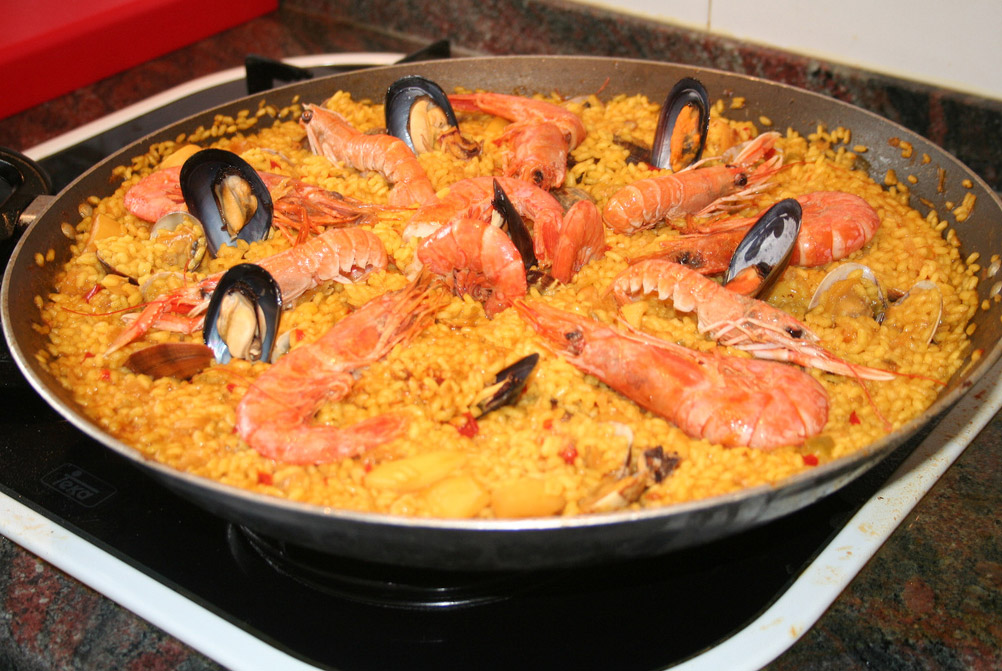I might have been one of the “theys” Jay. The first thing I can say is that that the Cayuse is a completely different beast - in blind tastings with first class Rioja it always comes in last. Not that they can’t do a good job in the US, but there isn’t much to talk about yet. Kind of like Nebbiolo - eventually they’ll get it, but right now it’s a work in progress.
Back in the 1970s after Franco there was a lot of upheaval. Generational shifts combined with political shifts and economic growth to cause big changes. People started to look at what was happening elsewhere in the world and they started incorporating new ideas. Remember in the 1970s Bordeaux, Tuscany, Austria, the Rhone, and other places were making efforts to improve their wines, and the US had come on the scene. The “traditional” Rioja model was for the people to sell their grapes to the bodega that would vinify and age them. But there was a nascent movement to do more estate bottling.
The best example would be CVNE - they had the Imperial, but they decided to do an estate bottling called Contino, which is a beautiful vineyard in a protected area surrounded by hills and which by reputation has the best Graciano in the area, and then Contino decided to do a single vineyard bottling called Viña Del Olivo, because there’s an old olive tree in the middle of the vineyard.
That’s happened with the other houses too.
Separately, there was a lot of criticism of the wines. I remember reading articles in magazines like Decanter and they were calling the wines old and tired. So people started trying to emulate places like Napa and Australia, incorporating more barrique aging, picking riper, and most importantly, releasing earlier. Next door to each other are Tondonia and Roda, and they’re as different as can be. Both have neatly trained vines, but walking into one is like walking into a chip fab facility or hospital - it’s spotless, while walking into the other is like walking into your grandpa’s old garage where he’s been keeping stuff for fifty years. Remirez de Ganuza is another one - he made a point of only taking the shoulders of the bunches, cutting off the lower parts of the bunches that received marginally less sunlight.
Were those distinctions important? One of the most polemical writers was Gerry Dawes and he hated the so-called “modern” wines, but had to eat crow when he tasted some of those that had aged. The Tempranillo grape is what mattered, not the stylistic approach, and while they were still distinguishable, old Tempranillo turned out to be pretty good whatever style it had been made in. And to his credit, Dawes acknowledged as much.
Muga made the Torre Muga for the same reason - it was going to be the modern wine. But it ages quite nicely. When I mentioned to him a number of years ago that I’d kept some, Isaac Muga said on no - drink it young because otherwise it will just be like a Gran Reserva. As if that’s a bad thing.
The “modern” ones would probably include Finca Allende, Finca Valpiedra, Artadi, Remírez de Ganuza, Roda, Sierra Cantabria, Benjamin Romeo, and Señorío de San Vicente, among others. But there’s less talk these days about “modern” vs “traditional”. Now there are different discussions.
They’ve recently allowed a few new grapes to be added. Also, people are doing varietal bottlings of grapes that you never saw before. You can get single-varietal Garnacha, Mazuelo, and Graciano, as well as the “traditional” blend of mostly Tempranillo with small percentages of those.
The other thing you’re seeing more of is vineyard designations. Rioja is commonly thought of as three regions - Rioja Alta, Rioja Alavesa, and Rioja Baja. In the past, Rioja Baja, because it was warmer, would be used for younger wines that weren’t necessarily aged. Muga for example, had Garnacha growing in Rioja Baja, which they’d mix with their Tempranillo from Rioja Alavesa, sort of like mixing grapes from Calistoga with some from Carneros.
But these days, people don’t want to do that, they want to create single-vineyard designated wines. Are those going to be better wines? Not at all. But they’ll be more costly and fashionable.
For me, the main advantage of Tempranillo, and why I started drinking it years ago, is that there is no other grape that is as good at every stage of its life, once it becomes wine. It’s good young, middle aged, and greatly aged. And I think it outlives anything except Nebbiolo.
